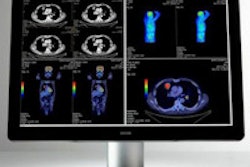Dear AuntMinnie Member,
Radiology's traditional paradigm of department-based radiologists providing services to clinicians located throughout the healthcare enterprise now poses big challenges for the specialty. In the age of PACS, this silo-based structure only serves to isolate imaging specialists from referring physicians, leading to calls for radiologists to re-establish relationships with their customers.
Apparently the phenomenon isn't just confined to the U.S., as exemplified by a new article we're featuring on Sidra Medical and Research Center, a new hospital under construction in Doha, Qatar. When the facility opens in 2015, Sidra will not only feature state-of-the-art equipment, but also a novel plan that moves radiologists out of a single isolated department and into clinical areas.
The idea has been explored before, but Sidra appears to be one of the first facilities to adopt it on such a broad scale. Imaging services will be dispersed throughout multiple areas, with radiologists integrated with other physicians as part of clinical teams. Sidra radiologists will be at the side of clinicians, providing reading services and guidance, which is generating enthusiasm among referring doctors.
Learn more about how it will work by clicking here, or visit our AuntMinnie Middle East special section at me.auntminnie.com.
New display unifies color, grayscale
While radiology has traditionally been a grayscale medium -- think of the classic chest image in its shades of black and white -- color is slowly creeping into the radiologist's palette. Ultrasound elastography, breast MRI contrast exams, and various forms of advanced visualization applications all depend on color.
But reading color images still requires radiologists to move away from their grayscale primary display, either to an adjacent monitor or to another workstation entirely. This can have deleterious effects, especially in today's environment where everyone is expected to do more with less.
Things could change, however, thanks to a new medical display launched today that aims to unify grayscale and color functions in a single monitor. The display includes the high resolution needed for interpreting grayscale images -- including mammography -- as well as the calibration needed for high-quality color.
Learn more about it by clicking here, or visit our Advanced Visualization Community at av.auntminnie.com.
Interruptions take toll
Finally, we close with an article on the toll that frequent interruptions can take on the diagnostic performance of residents when interpreting images. Researchers from Indiana University tracked the accuracy of residents before and after they received phone calls that interrupted their reading session. You might be surprised by what they found. Learn more by clicking here.



















